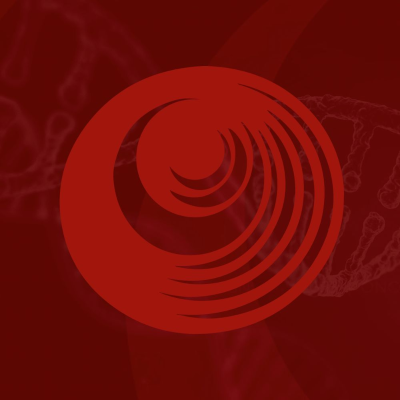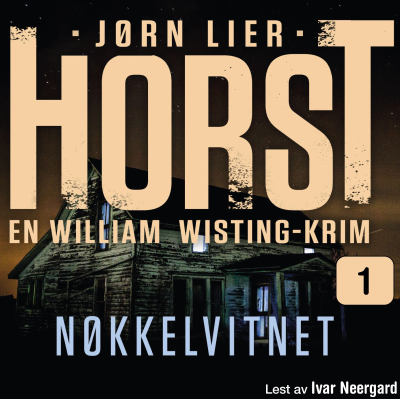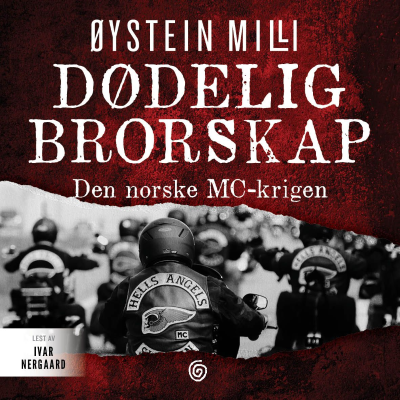
Oncotarget
engelsk
Teknologi og vitenskap
Prøv gratis i 14 dager
99 kr / Måned etter prøveperioden.Avslutt når som helst.
- 20 timer lydbøker i måneden
- Eksklusive podkaster
- Gratis podkaster
Les mer Oncotarget
Oncotarget is a primarily oncology-focused, peer-reviewed, open access journal. Papers are published continuously within yearly volumes in their final and complete form and then quickly released to Pubmed. Oncotarget is now indexed by MEDLINE, PubMed and PMC/PubMed. Read about the Oncotarget Scientific Integrity Process: https://www.oncotarget.com/scientific_integrity/
Alle episoder
612 EpisoderColorectal Cancer Survival Predicted by AI Using Clinical and Molecular Features
BUFFALO, NY - December 17, 2025 – A new #research paper was #published in Oncotarget (Volume 16) on December 15, 2025, titled “Machine learning-based survival prediction in colorectal cancer combining clinical and biological features.” In this study, led by Lucas M. Vieira from the University of Brasília and the University of California San Diego, researchers used machine learning to predict survival in patients with colorectal cancer. They built a model by combining biological markers with clinical data. This approach could help improve prognosis and guide treatment strategies for one of the world’s most common and deadly cancers. The team analyzed data from over 500 patients, using clinical details such as age, chemotherapy status, and cancer stage, along with molecular features like gene expression and microRNAs. Their goal was to improve how clinicians identify high-risk patients and make outcome predictions more precise. Researchers evaluated three different patient data scenarios using different machine learning techniques. The best-performing was an adaptive boosting model, which achieved 89.58% accuracy. This approach showed that integrating clinical and biological data led to significantly better predictions than using either data type alone. Among the biological markers, the gene E2F8 was consistently influential in all patient groups and is known to play a role in tumor growth. Other important markers included WDR77 and hsa-miR-495-3p, which are also associated with cancer development. Key clinical predictors included cancer stage, patient age, lymph node involvement, and whether chemotherapy was administered. “The proposed method combines biological and clinical features to predict patient survival, using as input data from patients from the United States, available in the TCGA database.” Unlike earlier models that relied on either clinical or molecular data alone, this study demonstrates the added value of combining both. Ensemble methods, which merge multiple learning algorithms, provided more stable and consistent results across all patient groups tested. These research findings could lead to new tools that help clinicians better predict how a patient's disease might progress or respond to treatment. The study also highlights the importance of collecting complete clinical information, such as lifestyle factors, which were missing from the dataset but could enhance future predictions. Overall, the study demonstrated how machine learning can support more accurate and personalized survival predictions in colorectal cancer. It also points to potential future research on markers like E2F8, which may be useful for monitoring or targeted therapy. DOI - https://doi.org/10.18632/oncotarget.28783 Correspondence to - Lucas M. Vieira - lvieira@health.ucsd.edu Abstract video - https://www.youtube.com/watch?v=cy7UL5ZUKuI Sign up for free Altmetric alerts about this article - https://oncotarget.altmetric.com/details/email_updates?id=10.18632%2Foncotarget.28783 Subscribe for free publication alerts from Oncotarget - https://www.oncotarget.com/subscribe/ Keywords - cancer, colorectal cancer, machine learning, feature selection, non-coding RNAs, genes To learn more about Oncotarget, please visit https://www.oncotarget.com and connect with us on social media: Facebook - https://www.facebook.com/Oncotarget/ X - https://twitter.com/oncotarget Instagram - https://www.instagram.com/oncotargetjrnl/ YouTube - https://www.youtube.com/@OncotargetJournal LinkedIn - https://www.linkedin.com/company/oncotarget Pinterest - https://www.pinterest.com/oncotarget/ Reddit - https://www.reddit.com/user/Oncotarget/ Spotify - https://open.spotify.com/show/0gRwT6BqYWJzxzmjPJwtVh MEDIA@IMPACTJOURNALS.COM
Comprehensive Genomic Profiling in Cancer: Insights from Over 10,000 Tumors
Cancer treatment is moving toward a more precision-based approach, where therapies are guided not just by the tumor’s location but also by its genetic features. Mutations in cancer cells can point to specific drugs that may be more effective for certain patients. However, detecting these mutations often requires broad and detailed analysis. This is where comprehensive genomic profiling becomes especially important. One of the main challenges in cancer care is that many existing genetic tools focus on only a limited number of mutations. As a result, some treatment opportunities may be missed. Certain mutations are also difficult to detect because they occur at low levels or exist in complex forms, such as gene fusions. Without advanced screening methods, these changes may go unnoticed. To address these challenges, researchers from Exact Sciences Corporation conducted a large-scale study using a broad genomic screening approach. The findings were recently published in the journal Oncotarget. Full blog - https://www.oncotarget.org/2025/12/15/comprehensive-genomic-profiling-in-cancer-insights-from-over-10000-tumors/ Paper DOI - https://doi.org/10.18632/oncotarget.28757 Correspondence to - Jean-Paul De La O - jdelao@exactsciences.com Abstract video - https://www.youtube.com/watch?v=awiRhDfiMTE Sign up for free Altmetric alerts about this article - https://oncotarget.altmetric.com/details/email_updates?id=10.18632%2Foncotarget.28757 Subscribe for free publication alerts from Oncotarget - https://www.oncotarget.com/subscribe/ Keywords - cancer, solid tumors, comprehensive genomic profiling, matched therapy, gene fusions, limit of detection To learn more about Oncotarget, please visit https://www.oncotarget.com and connect with us: Facebook - https://www.facebook.com/Oncotarget/ X - https://twitter.com/oncotarget Instagram - https://www.instagram.com/oncotargetjrnl/ YouTube - https://www.youtube.com/@OncotargetJournal LinkedIn - https://www.linkedin.com/company/oncotarget Pinterest - https://www.pinterest.com/oncotarget/ Reddit - https://www.reddit.com/user/Oncotarget/ Spotify - https://open.spotify.com/show/0gRwT6BqYWJzxzmjPJwtVh MEDIA@IMPACTJOURNALS.COM
Repurposing Statins: Exploring Anti-Tumor Effects in Colorectal Cancer
Colorectal cancer (CRC) remains the second leading cause of cancer-related deaths globally. While early detection significantly improves outcomes, many patients are diagnosed at advanced stages when treatment options are limited and relapse is common. To address this challenge, researchers are exploring whether existing drugs can be repurposed for cancer therapy, a strategy that could accelerate drug development while reducing associated costs and risks. One class of drugs under investigation is statins, commonly prescribed to reduce cholesterol and prevent cardiovascular disease. Several studies have observed a potential link between elevated cholesterol and increased CRC risk. Cholesterol may support tumor growth by promoting membrane synthesis and energy metabolism in rapidly dividing cells. Building on this connection, researchers from leading Indian institutions, including the Indian Institute of Science Education and Research and the Center of Excellence in Epigenetics at Shiv Nadar Institution of Eminence, investigated how statins influence CRC cells at the molecular level. Their goal was to determine whether these widely used drugs could have a therapeutic role in oncology. The Study: Investigating the Molecular Impact of Statins in CRC Cells The study, titled “Statins exhibit anti-tumor potential by modulating Wnt/β-catenin signaling in colorectal cancer,” was published in Oncotarget (Volume 16). Using a combination of lipidomics, transcriptomics, proteomics, and 3D tumor models, the researchers explored how two widely prescribed statins, atorvastatin and simvastatin, affect molecular pathways associated with CRC progression. This integrative, multi-omics strategy enabled tracing statin-induced effects across different layers of cellular function, linking lipid, transcript, and protein changes to pathway-level shifts. Full blog - https://www.oncotarget.org/2025/12/03/repurposing-statins-exploring-anti-tumor-effects-in-colorectal-cancer/ Paper DOI - https://doi.org/10.18632/oncotarget.28755 Correspondence to - Sanjeev Galande - sanjeev.galande@snu.edu.in Abstract video - https://www.youtube.com/watch?v=A95ICULaH3Y Sign up for free Altmetric alerts about this article - https://oncotarget.altmetric.com/details/email_updates?id=10.18632%2Foncotarget.28755 Subscribe for free publication alerts from Oncotarget - https://www.oncotarget.com/subscribe/ Keywords - cancer, colorectal cancer, statins, SATB1, Wnt/β-catenin signaling, tumor-suppressive phenotype To learn more about Oncotarget, please visit https://www.oncotarget.com and connect with us: Facebook - https://www.facebook.com/Oncotarget/ X - https://twitter.com/oncotarget Instagram - https://www.instagram.com/oncotargetjrnl/ YouTube - https://www.youtube.com/@OncotargetJournal LinkedIn - https://www.linkedin.com/company/oncotarget Pinterest - https://www.pinterest.com/oncotarget/ Reddit - https://www.reddit.com/user/Oncotarget/ Spotify - https://open.spotify.com/show/0gRwT6BqYWJzxzmjPJwtVh MEDIA@IMPACTJOURNALS.COM
New Antibody Removes Tregs to Boost Immune Response Against Cancer
Cancer is a disease caused by the uncontrolled growth of cells that escape the body’s natural defenses. One way cancer protects itself is by taking advantage of certain immune cells called regulatory T cells, or Tregs. Normally, Tregs help prevent autoimmune diseases by controlling the immune system. But inside tumors, they behave differently. Instead of defending the body, they suppress the immune cells that could attack the cancer. Many cancer treatments aim to activate the immune system to fight tumors more effectively. However, the presence of Tregs within the tumor makes this difficult. These cells act like bodyguards for the cancer, blocking the immune response that might otherwise slow or stop tumor growth. Researchers have tried to eliminate Tregs by targeting a protein called CD25, found on their surface. However, earlier efforts often failed because these treatments also interfere with interleukin-2 (IL-2), a molecule that is essential for other immune cells to function. Blocking IL-2 weakens the entire immune response, limiting the treatment’s effectiveness. To overcome this challenge, scientists recently developed a new antibody called 2B010. This study, titled “A novel anti-human CD25 mAb with preferential reactivity to activated T regulatory cells depletes them from the tumor microenvironment,” was published in Oncotarget (Volume 16). Full blog - https://www.oncotarget.org/2025/11/19/new-antibody-removes-tregs-to-boost-immune-response-against-cancer/ Paper DOI - https://doi.org/10.18632/oncotarget.28752 Correspondence to - Ethan M. Shevach - eshevach@Niaid.NIH.gov Abstract video - https://www.youtube.com/watch?v=2NJcGsI7WXA Sign up for free Altmetric alerts about this article - https://oncotarget.altmetric.com/details/email_updates?id=10.18632%2Foncotarget.28752 Subscribe for free publication alerts from Oncotarget - https://www.oncotarget.com/subscribe/ Keywords - cancer, Treg, CD25, TME, mAb, GVHD To learn more about Oncotarget, please visit https://www.oncotarget.com and connect with us: Facebook - https://www.facebook.com/Oncotarget/ X - https://twitter.com/oncotarget Instagram - https://www.instagram.com/oncotargetjrnl/ YouTube - https://www.youtube.com/@OncotargetJournal LinkedIn - https://www.linkedin.com/company/oncotarget Pinterest - https://www.pinterest.com/oncotarget/ Reddit - https://www.reddit.com/user/Oncotarget/ Spotify - https://open.spotify.com/show/0gRwT6BqYWJzxzmjPJwtVh MEDIA@IMPACTJOURNALS.COM
Probiotic Bifidobacterium May Boost Cancer Treatment and Suppress Tumors
BUFFALO, NY – November 18, 2025 – A new #review was #published in Oncotarget (Volume 16) on November 14, 2025, titled “Mechanism of anticancer action of bifidobacterium: Insights from gut microbiota.” This review, led by first author Hoang Do and correspondent author Ashakumary Lakshmikuttyamma from Thomas Jefferson University, explores how bifidobacterium, a common probiotic found in the gut, may contribute to cancer prevention and therapy. By analyzing existing studies, the authors highlight the growing importance of gut health in cancer treatment and shed light on how bifidobacterium could complement standard cancer therapies. Bifidobacterium is widely known for promoting digestive health and is often included in fermented foods and dietary supplements. However, emerging evidence suggests it may also play a broader role in immune regulation and cancer defense. The review explains how certain strains of bifidobacterium may enhance the effectiveness of chemotherapy, radiation, and immunotherapy in cancers such as breast, lung, colorectal, and gastric cancers. According to the review, bifidobacterium influences cancer outcomes through several biological mechanisms. It helps regulate immune function by reducing inflammation and supporting the activity of immune cells that target tumors. For instance, strains like B. longum and B. breve have been shown to lower levels of harmful inflammatory markers and boost anti-inflammatory responses. These changes can make cancer treatments more effective while also reducing side effects. “Presence of Bifidobacterium breve in gut microbiota extended the median progression-free survival of NSCLC patients.” The review also discusses how bifidobacterium helps detoxify the body by breaking down cancer-causing compounds and limiting their ability to damage cells. In preclinical studies, the probiotic reduced the activity of enzymes that produce carcinogens and helped in converting food-based substances into cancer-fighting agents. Some strains were even found to suppress genes that promote tumor growth and increase molecules that trigger cancer cell death. The authors emphasize that diet plays a critical role in supporting the growth of bifidobacterium. Foods rich in dietary fiber, especially those containing inulin and oligosaccharides like garlic, onions, or leeks, can help increase its levels in the gut. This suggests that simple dietary changes could not only improve gut health but also support cancer prevention and treatment strategies. Although the review presents compelling evidence, the authors stress the need for more clinical trials to determine how different strains of bifidobacterium affect specific types of cancer. Personalized approaches may be necessary to match the right probiotic strains with individual treatment plans. As research continues to uncover the link between gut microbes and cancer, bifidobacterium stands out as a promising natural ally that could enhance the body’s defenses and improve cancer treatment outcomes. DOI - https://doi.org/10.18632/oncotarget.28779 Correspondence to - Ashakumary Lakshmikuttyamma - axl025@jefferson.edu Abstract video - https://www.youtube.com/watch?v=KTWJDAN15lY Sign up for free Altmetric alerts about this article - https://oncotarget.altmetric.com/details/email_updates?id=10.18632%2Foncotarget.28779 Subscribe for free publication alerts from Oncotarget - https://www.oncotarget.com/subscribe/ To learn more about Oncotarget, please visit https://www.oncotarget.com and connect with us: Facebook - https://www.facebook.com/Oncotarget/ X - https://twitter.com/oncotarget Instagram - https://www.instagram.com/oncotargetjrnl/ YouTube - https://www.youtube.com/@OncotargetJournal LinkedIn - https://www.linkedin.com/company/oncotarget Pinterest - https://www.pinterest.com/oncotarget/ Reddit - https://www.reddit.com/user/Oncotarget/ Spotify - https://open.spotify.com/show/0gRwT6BqYWJzxzmjPJwtVh MEDIA@IMPACTJOURNALS.COM
Velg abonnementet ditt
Premium
20 timer lydbøker
Eksklusive podkaster
Gratis podkaster
Avslutt når som helst
Prøv gratis i 14 dager
Deretter 99 kr / month
Premium Plus
100 timer lydbøker
Eksklusive podkaster
Gratis podkaster
Avslutt når som helst
Prøv gratis i 14 dager
Deretter 169 kr / month
Prøv gratis i 14 dager. 99 kr / Måned etter prøveperioden. Avslutt når som helst.

































